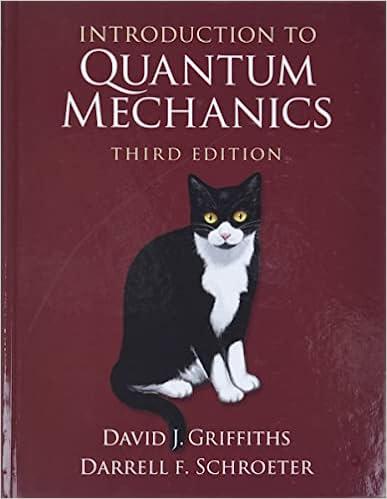For the examples in Problem 11.24 (c) and (d), calculate C m (t), to first order. Check
Question:
For the examples in Problem 11.24 (c) and (d), calculate Cm(t), to first order. Check the normalization condition:

and comment on any discrepancy. Suppose you wanted to calculate the probability of remaining in the original state ΨN; would you do better to use
![]()
Problem 11.24 (c) and (d)
(c) For example, suppose Ĥ' is constant (except that it was turned on at t = 0, and switched off again at some later time . Find the probability of transition from state N to state M (M ≠ N), as a function of T.

(d) Now suppose Ĥ' is a sinusoidal function of time: Ĥ' = VCos(ωt). Making the usual assumptions, show that transitions occur only to states with energy EM = EN ± ћω, and the transition probability is

Step by Step Answer:

Introduction To Quantum Mechanics
ISBN: 9781107189638
3rd Edition
Authors: David J. Griffiths, Darrell F. Schroeter





